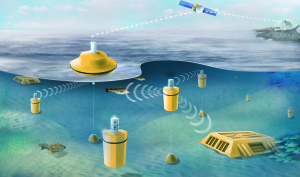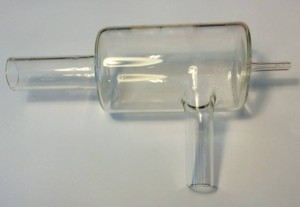Sound is not just for people. Sound waves can also be used to measure and influence a wide variety of physical systems and processes. Additionally, sound waves can be generated in flows around e.g. aircraft or windmills. A thorough understanding of the physics of acoustics is essential to understanding these topics. Industrial acoustics is about technical applications and behaviour of sound, independent of human listeners.

Topics
- Marine acoustics: Sound underwater is largely similar to sound above water, although the applications are different. Sonar, seismics, seabed mapping, and underwater communication are examples of such applications.
- Underwater communication: If underwater vehicles and structures are to communicate with each other and with the outside world without physical cables, sound is the only feasible information carrier beyond very short ranges. This is due to high attenuation of electromagnetic waves in sea water.
- Flow acoustics: Sound can be generated in fluid flows, in particular in conjunction with turbulence and surfaces. Some examples are the noise from aircraft and windmills, and the howling noise in corrugated pipes. Understanding the mechanisms of generation is essential to reducing noise in such cases.
- Ultrasonic non-destructive testing: Ultrasound is used medically for non-invasive measurement of the human body. Similarly, it can also be used industrially for non-invasive measurement of physical structures, for instance to look for internal defects in a material or to determine the presence and quality of materials in inaccessible locations.
- Instrumentation, transducers, and sensors: To ensure that the correct signals are transmitted and received, expertise in instrumentation, transducers, and sensors is essential.
- Signal and array analysis: Getting the right information from received measurement signals in an accurate and robust manner, and classifying measurements by use of pattern recognition requires a solid understanding of signal analysis.

Courses at NTNU
- TTT4180 Technical Acoustics: General introductory course on acoustics, which also covers the generation and propagation of sound in simple systems.
- TTT4175 Marine Acoustics: Introductory course on underwater acoustics, covering underwater sound propagation, sonar, and underwater transducers, among other things.
- TTT4250 Acoustic Measurement Techniques: Provides background on typical measurement tasks in various fields of acoustics, including marine acoustics.
- TTT4565 Acoustics, Specialization Course: Includes the course modules TTT03 Acoustical Remote Sensing, TTT12 Numerical Acoustics, Selected Topics, and TTT19 Marine Acoustics, Selected Topics.
- Additional PhD-level courses are also available.



